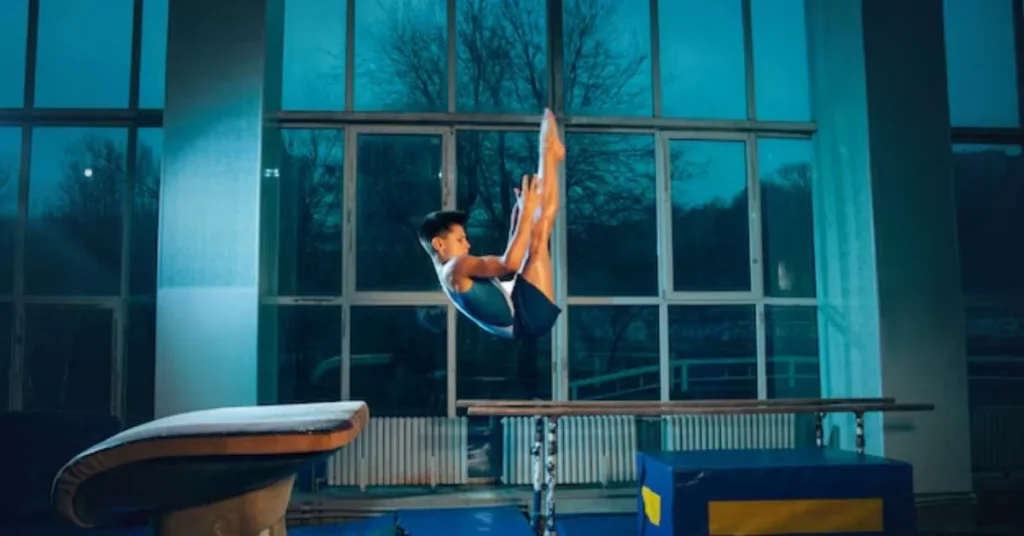
When it comes to mastering a flexible gymnastics move NYT, learning proper techniques can make all the difference. The New York Times (NYT) often features articles on training, flexibility, and the best practices for gymnasts, sharing expert tips that help people achieve graceful, powerful moves safely. In this post, we’ll explore various flexible gymnastics moves, techniques to enhance flexibility, and methods for building strength to support these skills.
What is a Flexible Gymnastics Move NYT?
In gymnastics, flexibility is key to performing many routines, from basic stretches to complex splits, bridges, and contortions. A flexible gymnastics move NYT refers to any pose or action that requires the body to stretch and extend beyond its usual range, showcasing the athlete’s control and strength. Flexibility can make movements look effortless, which is why it’s so essential in gymnastics.
Must read www.goodmooddotcom.com Luxury Category: Your Guide to Premium Shopping
The Importance of Flexibility in Gymnastics
Flexibility in gymnastics allows for a greater range of motion, enabling athletes to perform impressive stunts and avoid injuries. Many NYT articles emphasize the importance of flexibility training as it helps reduce strain on the joints and muscles, improving overall athletic performance. For beginners, achieving these flexible moves can be challenging, but with consistent practice, anyone can make great progress.
Flexible Gymnastics Move NYT is a core element in gymnastics, allowing athletes to perform a wide range of movements with ease and grace. It enables gymnasts to extend their limbs, reach challenging positions, and flow smoothly between complex routines. With increased flexibility, gymnasts can reduce the risk of injury by minimizing strain on their muscles and joints, as their bodies can handle greater ranges of motion.
Flexibility also plays a role in balance and control, which are essential for maintaining stability in challenging poses. In competitive gymnastics, flexibility often sets apart the top performers, as it allows for a cleaner, more precise execution of skills. Training for flexibility enhances the athlete’s strength and coordination, creating a foundation that supports advanced gymnastics techniques.

Types of Flexible Gymnastics Moves
There are many flexible gymnastics moves that gymnasts aim to master. Here are some popular moves that you can incorporate into your routine:
1. Splits
The split is one of the most recognized flexible gymnastics moves, often highlighted in Flexible Gymnastics Move NYT fitness guides for its emphasis on hamstring and hip flexibility. Performing a full split requires practice and stretching, but it’s attainable with consistent effort.
2. Bridges and Backbends
Bridges and backbends showcase spinal flexibility. These moves are beneficial for gymnasts because they improve shoulder, back, and core flexibility, helping in more advanced stunts like the walkover.
3. Leg Holds and Scales
These poses involve lifting one leg high while maintaining balance. Gymnasts use leg holds to build strength in the core and legs, and the scale requires control and flexibility to execute perfectly.
4. Pike and Straddle Positions
The pike and straddle involve extending the legs in specific angles. These moves strengthen core flexibility and hamstrings, which is essential for jumps and aerial moves.
Tips for Mastering a Flexible Gymnastics Move
Learning how to execute Flexible Gymnastics Move NYT can seem overwhelming, especially if you’re new to gymnastics. Here are some steps that can help you master these skills:

1. Warm Up Before You Stretch
Warming up is essential to avoid injuries and increase the effectiveness of your stretches. Light cardio, like jogging or jumping jacks, is a great way to prepare your body for intense stretching sessions.
2. Start with Basic Stretches
When aiming to achieve a flexible gymnastics move, begin with basic stretches. Lunges, hamstring stretches, and shoulder rolls are ideal for loosening up your muscles. Remember that flexibility doesn’t happen overnight—it requires patience and regular stretching.
3. Practice Consistently
Consistency is crucial in flexibility training. The more regularly you stretch, the better your flexibility will become. Many NYT articles recommend daily stretching for those serious about improving their flexibility. Aim for 10-15 minutes each day to start.
4. Use Proper Technique
Using proper technique is crucial to avoid injuries. Pay attention to your form and avoid pushing your body past its limits. A qualified instructor or trusted online resource can provide guidance.
5. Incorporate Strength Training
Strength and flexibility go hand in hand. By strengthening the muscles supporting your joints, you reduce the risk of injury and enhance your overall performance. Include core exercises, like planks and leg lifts, to support your flexible gymnastics moves.
Conclusion
Mastering a Flexible Gymnastics Move NYT requires dedication, consistency, and a safe approach. By following proper techniques, warming up, and including both strength and flexibility training, anyone can improve their flexibility and achieve impressive gymnastics moves. Embracing a balanced approach to flexibility ensures progress while minimizing injury risks.
For those inspired to start on Flexible Gymnastics Move NYT, remember that is a journey, and each step counts towards becoming more capable and confident in your gymnastics skills. Whether you’re just beginning or already experienced, aiming for flexibility can benefit your entire fitness journey. Click here for more information.

How long does it take to achieve a flexible gymnastics move?
The time varies for everyone. With consistent practice, most people see noticeable improvements in flexibility within a few weeks, but achieving full moves like splits may take months.
Can anyone learn flexible gymnastics moves?
Yes, Flexible Gymnastics Move NYT can be developed over time, but it’s important to start slow, especially for beginners. Most people can achieve a good range of flexibility with consistent training.
Are there risks in attempting flexible gymnastics moves?
Yes, stretching too quickly or without proper warm-up can lead to injuries. Always warm up first, and progress slowly to prevent muscle strains.
What are the best stretches for beginners?
Some good beginner stretches include hamstring stretches, lunges, and basic back stretches. Focus on these before progressing to more challenging poses.
How often should I practice flexibility exercises?
Consistency is key, so aim for at least 3-4 times a week. For best results, include shorter stretching sessions in your daily routine.







